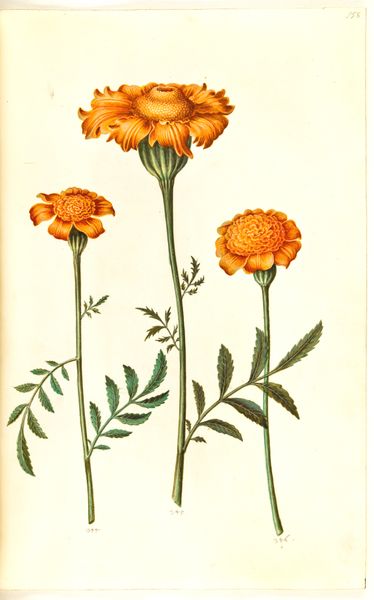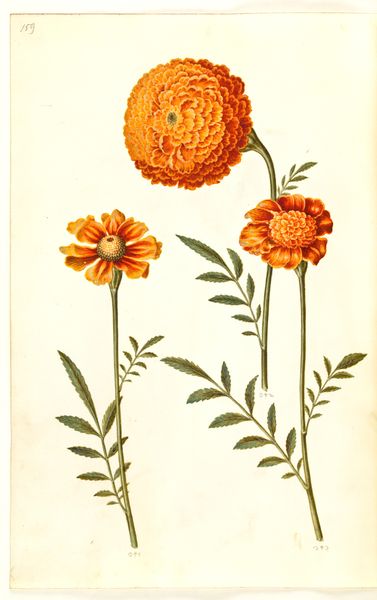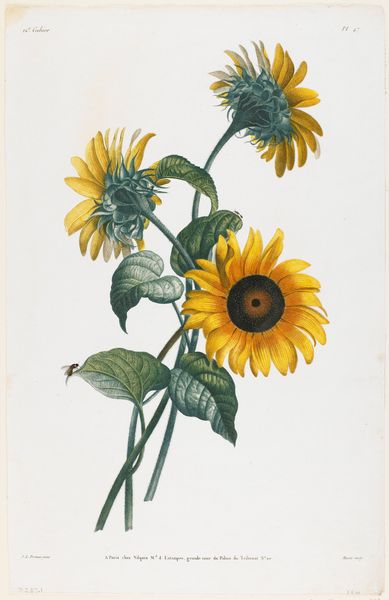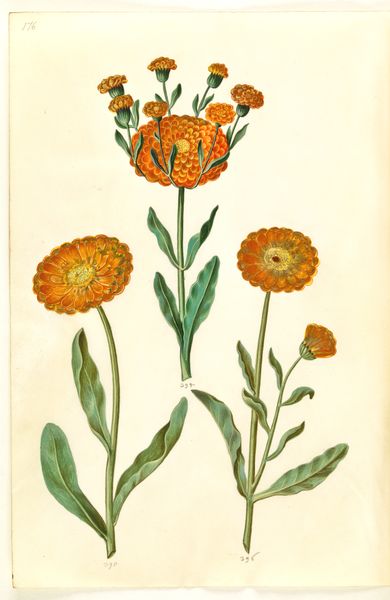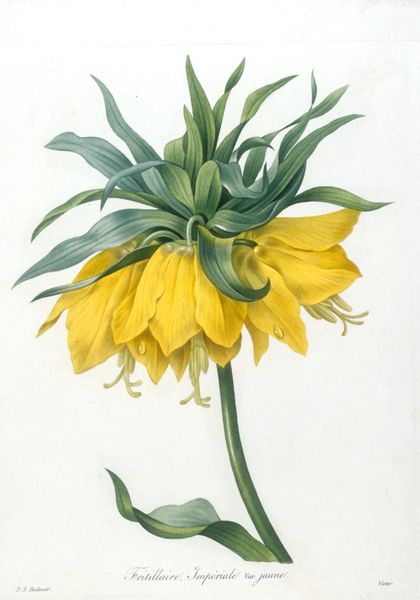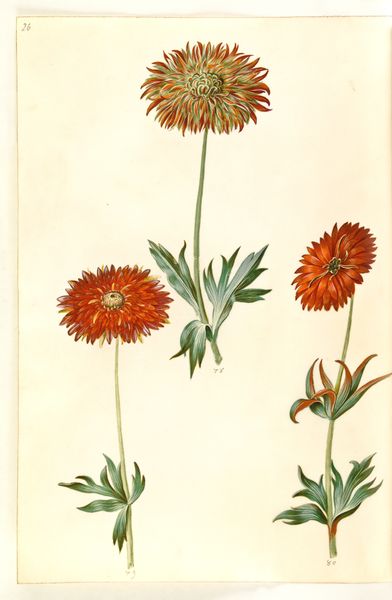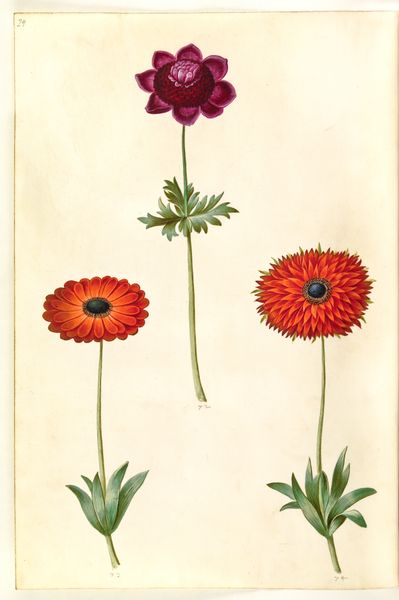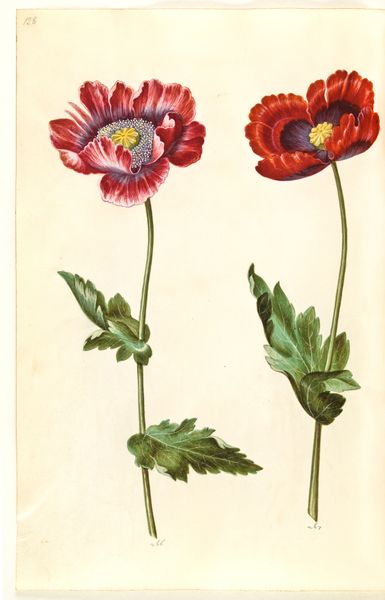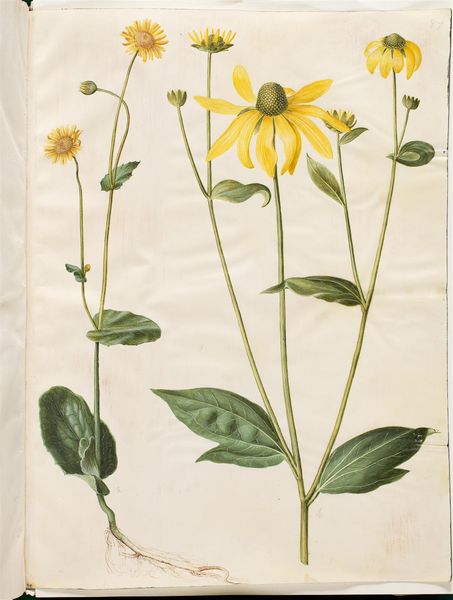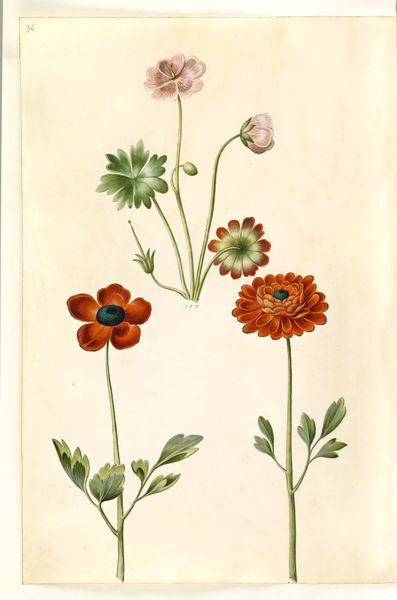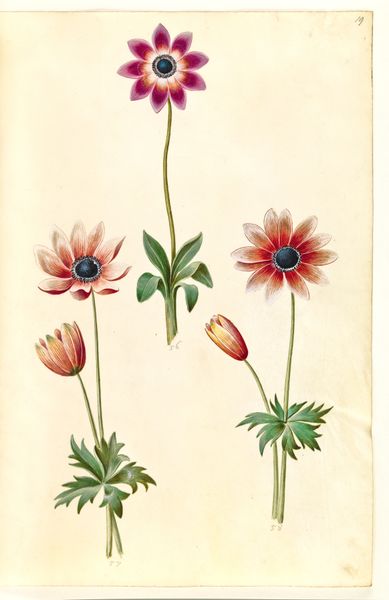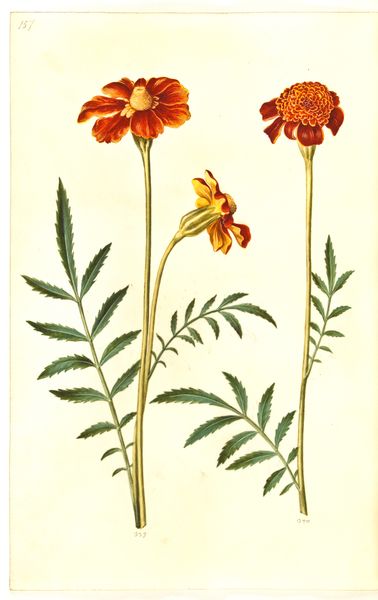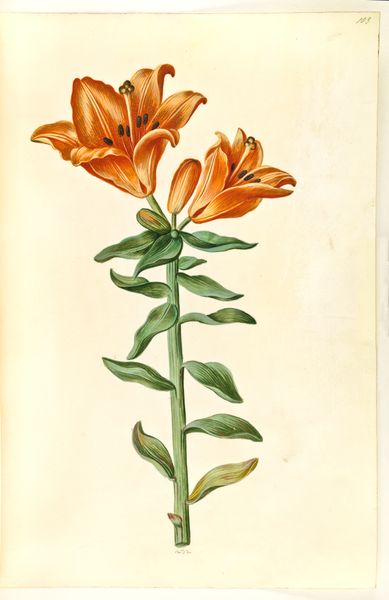
drawing, print, paper, watercolor
#
drawing
# print
#
botanical illustration
#
paper
#
watercolor
#
botanical drawing
#
botanical art
#
realism
Dimensions: 11 x 8 1/2 in. (27.94 x 21.59 cm) (plate)19 5/8 x 23 3/4 x 1 1/8 in. (49.85 x 60.33 x 2.86 cm) (outer frame)
Copyright: Public Domain
Editor: So, here we have "Lychnide a grandes fleurs" by François Langlois, created in 1827. It's a watercolor and print on paper. It's quite detailed, almost scientific. What do you see in it? Curator: This botanical illustration reflects a specific moment in the history of science and art. During the late 18th and early 19th centuries, there was a surge of interest in natural history. Think of figures like Linnaeus, who revolutionized the classification of plants. Editor: So, it's about categorizing and understanding the natural world? Curator: Precisely. These botanical illustrations, often commissioned by wealthy patrons or scientific institutions, served a dual purpose. They were both artistic renderings and scientific documents, carefully depicting the minute details of plants for study and classification. The fact that it is both a watercolor AND a print tells us a lot about production; How might it have been distributed widely? Who would have consumed the images? Editor: That's a great point. I hadn't considered the print aspect, just the artistic side. What impact might botanical illustrations have on society? Curator: The dissemination of knowledge about the natural world played a significant role in shaping European identity. Displaying mastery over nature through detailed representation reflected cultural ambitions of expansionism. But who was this knowledge meant for, and what was its true impact? We need to critically assess the underlying power structures involved in collecting and distributing such images. Editor: It’s more than just a pretty picture, it's connected to science, culture, and even power. Thanks, that really opened my eyes. Curator: It's crucial to look beyond the surface and understand how images are constructed within particular historical and social frameworks.
Comments
No comments
Be the first to comment and join the conversation on the ultimate creative platform.

